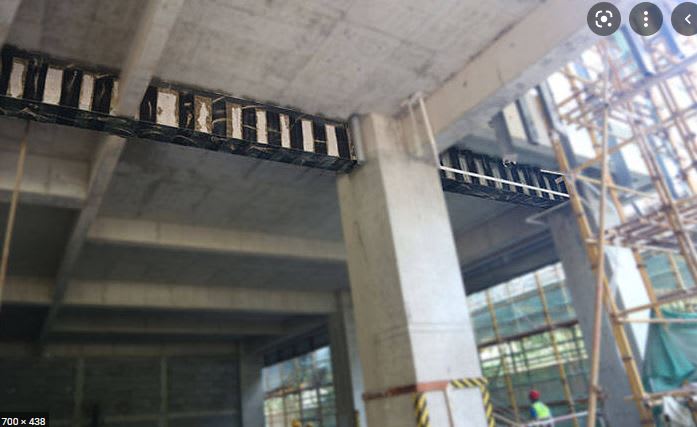SoFloJoe
Structural
- Apr 3, 2018
- 76
Hi All,
I have an building safety inspection project for a building in South Florida. We are required to do the 40yr and every 10yr structural inspection.
So this building in question is a single story CBS concrete block structure. The original plans are from 1973 and barely legible. But I can read on a section the the tie beam is 8x16 with 4 #5 rebar reinforcement. Which match up with my site measurements.
The issue that I see is at some point someone took out the CMU underneath the tie beams leaving spans of 15ft unsupported RC tie beams. Doing the calcs the size works for the span and tributary area. BUT, we should have shear reinforcement per today's standards. NOTE, that there were no designed areas of the plan that had such a span. The largest opening were for doors at about 6ft.
Right now there are no signs of shear cracks and beams are in relatively good condition. The walls were removed at least 5years ago or more, based on this owners testimony.
Anyone familiar with older construction have any opinion on if shear reinforcement was a requirement? Were they left off the plans as a normal thing but installed anyways?
Has anyone dealt with a scenario like this and offer any insight?
I am thinking of noting on my report that shear reinforcement was unable to be confirmed and therefore recommend an xray on density analysis to confirm if they are there.
Any insight is appreciated.
Thanks in advance!
I have an building safety inspection project for a building in South Florida. We are required to do the 40yr and every 10yr structural inspection.
So this building in question is a single story CBS concrete block structure. The original plans are from 1973 and barely legible. But I can read on a section the the tie beam is 8x16 with 4 #5 rebar reinforcement. Which match up with my site measurements.
The issue that I see is at some point someone took out the CMU underneath the tie beams leaving spans of 15ft unsupported RC tie beams. Doing the calcs the size works for the span and tributary area. BUT, we should have shear reinforcement per today's standards. NOTE, that there were no designed areas of the plan that had such a span. The largest opening were for doors at about 6ft.
Right now there are no signs of shear cracks and beams are in relatively good condition. The walls were removed at least 5years ago or more, based on this owners testimony.
Anyone familiar with older construction have any opinion on if shear reinforcement was a requirement? Were they left off the plans as a normal thing but installed anyways?
Has anyone dealt with a scenario like this and offer any insight?
I am thinking of noting on my report that shear reinforcement was unable to be confirmed and therefore recommend an xray on density analysis to confirm if they are there.
Any insight is appreciated.
Thanks in advance!

